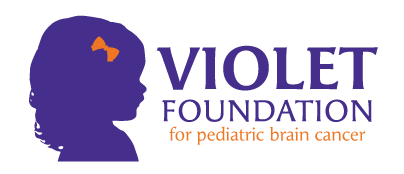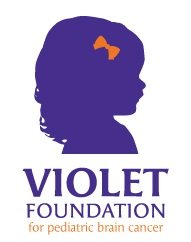
Research
Our Research Mission
Our goal is to support scientific research and clinical trials aimed specifically at improving the survival rate of pediatric brain cancers. The treatment of many of these tumors is made complex by a number of factors, including the position within the brain, the blood-brain barrier that blocks many drugs from entering the brain from the bloodstream, and the nature of the tumor’s growth. Extreme care must be taken in treatment so as to not damage healthy brain cells, which could affect the cognitive ability of the patient.
Brain tumors claim the lives of more children than any other childhood cancer. We aim to change that.
With the support of private funding, promising gains have been made in recent years which may lead to better treatment regimens. Immunotherapy treatment utilizes the brain’s own immune cells to selectively attack tumor cells while not harming healthy brain cells. Certain chemotherapies have shown promise in slowing down tumor growth and extending the lives of young patients. Many of these trials are still Phase 1, however, and will need significant resources to further validate and improve.
The Violet Foundation will support research efforts with a singular focus: to one day be able to save these kids’ lives. We will tap the expertise of the field’s leading experts to select the most promising projects and monitor their progress closely. While we want to be there to support families going through their worst nightmare, nothing is more important than trying to develop the treatments available so that one day, there is hope for diseases such as DIPG.
Less than 4% of U.S. federal funding goes toward pediatric cancers.
Research Projects Funded
Robbie Majzner, Stanford University
Engineering Enhanced GD2 CAR T-Cells to Overcome DIPG Immune Resistance
This project will build on Dr. Majzner’s experience with the current Stanford CAR T-cell trial, which uses immunotherapy to treat children with DIPG. Several patients have developed significant responses; however, some showed only temporary improvement or did not respond at all. Through this project, Dr. Majzner and his team aim to test and validate a new type of GD2 CAR T cell that is capable of enhanced persistence and anti-tumor efficacy, providing a more effective strategy for treating patients with DIPG/DMG.
Bilal Omer, Baylor College of Medicine
C7R-GD2 CAR T-Cells for DMG: Clinical Trial of Dual Route Strategy
New research has shown that 80% of DMG cases exhibit high levels of a protein called GD2. To target GD2, scientists are utilizing immunotherapy to destroy cancer cells. Dr. Omer and his team have improved the effectiveness of the GD2-targeting CAR T-cells by incorporating an additional gene, C7R, which enhances their anti-tumor capabilities and extends their lifespan. So far, they have treated 12 patients, with two experiencing tumor reduction exceeding 50%. Our grant with Chadtough will enable the trial to take on more patients.
Sabine Mueller & Pavithra Viswanath, University of California San Francisco
In Vivo Imaging of Diffuse Midline Gliomas
DMGs are brain tumors that often spread diffusely, making it challenging to track their progression. Current methods rely heavily on MRI scans, which do not always provide accurate information about treatment response. Dr. Viswanath and Dr. Mueller have discovered that changes in deuterated glucose metabolism can be observed within five days of radiotherapy in mice with DMGs, even when MRI scans show no visible alterations. In this study, they aim to investigate whether deuterated glucose can be used to visualize active tumor tissue and serve as an early indicator of therapy response in DMG-bearing mice. If successful, this may lead to a better way to track the effects of treatment on children’s brains, allowing doctors to know more quickly whether to continue the current course or pivot to something else.
Sneha Ramakrishna, Stanford University
Immune Determinants of GD2 CAR T-Cell Activity in DIPG Patients
In 2021, Stanford doctors, including Dr. Ramakrishna, initiated a clinical trial to use CAR T-cells for treating DIPG in children and young adults. This therapy trains the immune system’s T cells to locate and eliminate cancer cells. Encouragingly, 10 out of 12 patients who received these CAR T-cells experienced tumor shrinkage and improvement in symptoms. This project aims to gain insights from patients to understand why CAR T-cell therapy succeeded or failed, with the aim of enhancing and optimizing the treatment.
John Prensner, University of Michigan
Targeting Aberrant RNA Translation in DIPG
In all cancers, certain genes become overactive to fuel their growth and aggressiveness. To function properly, genes need to convert their DNA code into a temporary form called RNA, which serves as a template for producing proteins that carry out cellular functions. In DIPG, many of the genes responsible for cell growth disrupt the normal process of RNA translation, leading to the production of unintended protein products. Through this project, Dr. Prensner proposes that targeting this abnormal RNA processing could be a vulnerability in DIPG that can be exploited for treatment.
Sandro Matosevic, Purdue University
Reprogramming the Tumor Microenvironment in DIPG with Engineered iPSC-NK Cells to Improve Immunotherapy
This project aims to develop a powerful and innovative immunotherapy using induced pluripotent stem cell (iPSC)-derived NK cells. These engineered NK cells aim to eliminate DIPG and enhance the activity of other immune cells against the tumor. Dr. Matosevic intends to demonstrate that combining iPSC-engineered NK cells with strategies to disrupt the DIPG TME will challenge current treatment approaches and revolutionize the way we treat DIPG.







